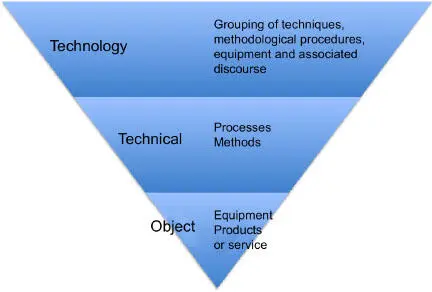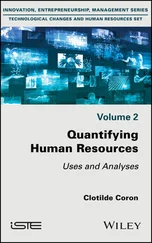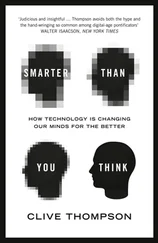As for technology, it is, according to the classical definition, the social science that takes a technique as its object, the study of techniques, tools, machines and materials. However, it should be recognized that clearly distinguishing the two concepts may seem difficult. Therefore, we will admit, by extension and according to a widespread use, the use of the term technology as a grouping of the techniques, procedures, methodologies, equipment and discourses associated with their implementation. In this second sense, we will speak of digital technology, biotechnology, agro-technology, etc.
In any case, we will not confuse the technical object, the product of human activity, with technology. The technical object is only one of its elements, the most concrete, the hard material of technology, “hardware”. It is a solid thing consisting of one or more tangible and intangible components (organs, information, energy and other resources), functionally arranged, designed and realized to meet a specific need or needs. Among the technical objects, we will distinguish between the technical equipment (infrastructure, machinery and tools) used to produce other objects, and the resulting products (see Figure I.1).

Figure I.1. From technology to object
These clarifications are proposed as conventions that we would like to share with the readers of this book. They will lead us, for example, to consider digital technology as the grouping of a set of technologies covering fields of application as diverse as medicine (video-endoscopy), prototype production (additive manufacturing or 3D printing), architecture (Building Information Models, or geometric representations of a building in 3D), and graphic creation (digital comic strips). Each of these technologies in turn brings together several objects. Thus, additive manufacturing is based on printers, producing objects as varied as functional parts, tooling components, models for metal casting, etc.
Talking about technological change and not technical change is not insignificant. The term “technological change” emphasizes the need not to separate methodical processes from the principles that reflect them and from the ecosystem (economic, social, organizational, ideological) in which the technologies lead to successful practices. In this sense, technological change is not reduced to a change of processes (i.e. a technical change) and even less to a simple change of technical object. Thus, digital transformation is not just about the arrival of a few objects offered to consumers. It leads to a transformation of work structures as a new division of labor between the operator and the machine 1.
I.1.2. How can we address technological change? First elements
Technological change can be approached from three main perspectives. The techno-centric perspective (centered on the technical object) is usually contrasted with the anthropotechnical perspective (centered on the human-technical couple). Between the two, we will insert a “romantic” perspective, based on the joint glorification of the inventor and the object of his creation. We will define these three points of view by illustrating them and considering them both at a “macro” scale (that of the history of technologies) and at a “micro” scale (that of organizational change).
I.1.2.1. Technocentrism: the primacy of the technical object
The dominant representation of technological change, conceived in terms of the technology itself, corresponds to a perspective that has been described as techno-centric (Jacob and Ducharme 1995; Rabardel 1995). It is focused on the machine and its possibilities. This is the case for a history of computing in terms of generations of technical objects (see Box I.1).
Box I.1. Computer generations from a techno-centric perspective
| 1945–1955 |
First generation: electronic tube machines (vacuum tubes). The first fully electronic computer, the ENIAC (Electronical Numerical Integrator And Calculator) weighs 30 tons and occupies 135 m 2. |
| 1955–1965 |
Second generation: transistor computers that make it possible to build more reliable and less bulky machines. |
| 1965–1980 |
Third generation: integrated circuits (also called electronic chips). The Intel 4004 processor achieves the same performance as the ENIAC for a size of less than 11 mm 2. |
| 1980–2000 |
Fourth generation: microprocessors. Integration of thousands to billions of transistors on the same silicon chip. |
| 2000 |
Fifth generation: widespread use of networks and graphical interfaces (there are disagreements between specialists about the existence of this fifth generation). |
This first perspective, concerned with the object and its materiality, does not address the human dimension of technological change. At the organizational level, it can lead to neglecting the individual who becomes the residual part of technological change, the part that is said to resist change.
I.1.2.2. The romantic perspective: the inventor and his creation
Here, technological change is often represented as a chronological succession of technical objects with which glorious personalities and events are associated, such as the one we have taken up, by way of illustration, in Box I.2.
This tenacious tendency undoubtedly gives an attractive representation of technological change because of its simplicity, its exaltation of the idea of progress and the myth of great men. But it will not be our preference. To attribute to a single individual, at a given date, an invention when it is usually the result of a maturation, resulting from parallel research, seems to us to be from a romantic perspective.
Box I.2. Technological change as a succession of uses
| 1769 |
James Watt develops an improved condenser for the steam engine. |
| 1821 |
Michael Faraday demonstrates the first electric motor. |
| 1838 |
Charles Wheatstone builds the first electric telegraph. |
| 1859 |
Étienne Lenoir makes the first internal combustion engine. |
| 1876 |
Alexander Graham Bell files a patent on the telephone. |
| 1879 |
Thomas Edison develops the carbon filament bulb. |
| 1884 |
Hiram Maxim invents the first self-propelled machine gun. |
| 1899 |
Guglielmo Marconi makes the first transatlantic radio transmission (which won him the Nobel Prize in 1909). |
| 1903 |
Brothers Orville and Wilbur Wright make their first motorized flights. |
| 1923 |
Vladimir Zworykin patent the iconoscope, a fully electronic television transmission tube. |
| 1947 |
Bardeen, Brattain and Shockley (Nobel Prize winners in physics in 1956) invent a new type of transistor. |
| 1957 |
The Soviets launch Sputnik 1, the first spacecraft placed in orbit around the Earth. |
| 1969 |
Edward Hoff and Federico Faggin develop the very first electronic chip, the microprocessor. |
| 1973 |
François Gernelle develops the first microcomputer, the Micral N. |
| 1977 |
Designed by Steve Wozniak, the Apple II, a personal computer, is developed in Steve Jobs’ garage, manufactured on a large scale and marketed by Apple Computer. |
| 1982 |
Microsoft, created by Bill Gates and Paul Allen, presents MS/DOS (Microsoft Disk Operating System) developed for the IBM PC, then for compatible PCs. |
| 1994 |
Jeff Bezos founds the Amazon website, which becomes the world’s largest online sales company. He lists the shares on the stock exchange in 1997. |
| 1998 |
Google is created by Larry Page and Sergey Brin, two students from Stanford University, who together initiate the search engine of the same name. |
| 2005 |
Mark Zuckerberg founds the online social network Facebook, after testing it on his fellow students at Harvard University. |
This second perspective leaves little more room for the human being than the first, at most the latter is thought of as the progenitor of the technical object. The emphasis on the glorious origins of a tool is reflected at the organizational level when technological change is referred to exclusively in reference to the individual who was at the origin of a technological innovation and who gives it a prestigious character.
Читать дальше













